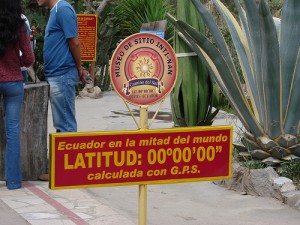
A local listing agent phoned me today about his short sale. He was expressing his irritation with the process. It’s not the first call that I have ever received from an agent who is tired of the short sale process. Interestingly, it was not the first call today from a frustrated agent.
Are you familiar with Charles Darwin, Natural Selection, or Survival of the Fittest? If I didn’t know better, I might think that Darwin came up with that theory after he attempted to work with the banks on a few short sales.
In any case, one person’s pain is another person’s pleasure and the experiences of this short sale listing agent are a great topic for a blog post about Bank of America’s (and GMAC’s) use of the Equator platform for processing short sales.
This particular short sale has two lien holders. The first lien is being handled through the Equator system, and the second lien is with another major lending institution. The first lien holder has already approved the short sale and the short sale listing agent already had the approval letter in hand. Kudos! That, in itself, is a great accomplishment. For many agents, just managing short sale through the Internet-based Equator platform is a challenge. But, the problem was that the net amount to the first lien holder on the approval letter did not jibe with the net amount on the settlement statement drawn up by the escrow office.
This is the part of short sales that confuses many folks. The lien holders in the short sale are only concerned with two things: 1) closing, and 2) how much they are going to net when the deal closes. As such, they are looking to the settlement statement that the short sale listing agent (or short sale negotiator) provides as a means to confirm the net amount. So, it is vital that the settlement statement is prepared very carefully and contains the correct net amount.
In the case of this short sale listing agent, the problem was a five thousand dollar problem. I reviewed the approval letter and I reviewed the HUD. I saw that the bank had reduced the commission and I worked out a few other issues. I then asked the agent to print out the worksheet in Equator so that I could also review the worksheet. This agent was unfamiliar with the worksheet and its role in the transaction.
If you use Equator for your short sales, then you probably have seen the form where you receive the counter offers—the one that you can accept or fill in more blanks. Well, that’s the worksheet and it shows the exact amounts that the bank will be approving. You can print out the worksheet as a pdf or you can save it onto your computer.
When you receive a worksheet for review, you must take a lot of time to carefully look at the amounts on the worksheet; this worksheet is your counter offer. Sometimes the bank will counter by asking for a higher purchase price, and other times the bank may reduce the settlement fees, the commission, or may ask for a cash contribution or a promissory note. These are all items that you can agree to or you can counter. But, you cannot overlook them. If you overlook these items, then you may end up with a short sale approval letter that does not meet the needs of your transaction. In this five thousand dollar short sale mystery, the short sale listing agent did not notice that the bank had requested a five thousand dollar cash contribution on the short sale counter offer worksheet. Since the agent did not counter that amount bank down to zero, the bank conditioned the approval on the five thousand dollar cash contribution.
I cannot stress enough how detail-oriented you need to be if you are working on short sales. You must study each document before you send it, and you must really pay attention to the details—even if you plan to avoid all future short sales as if they were the Plague.
